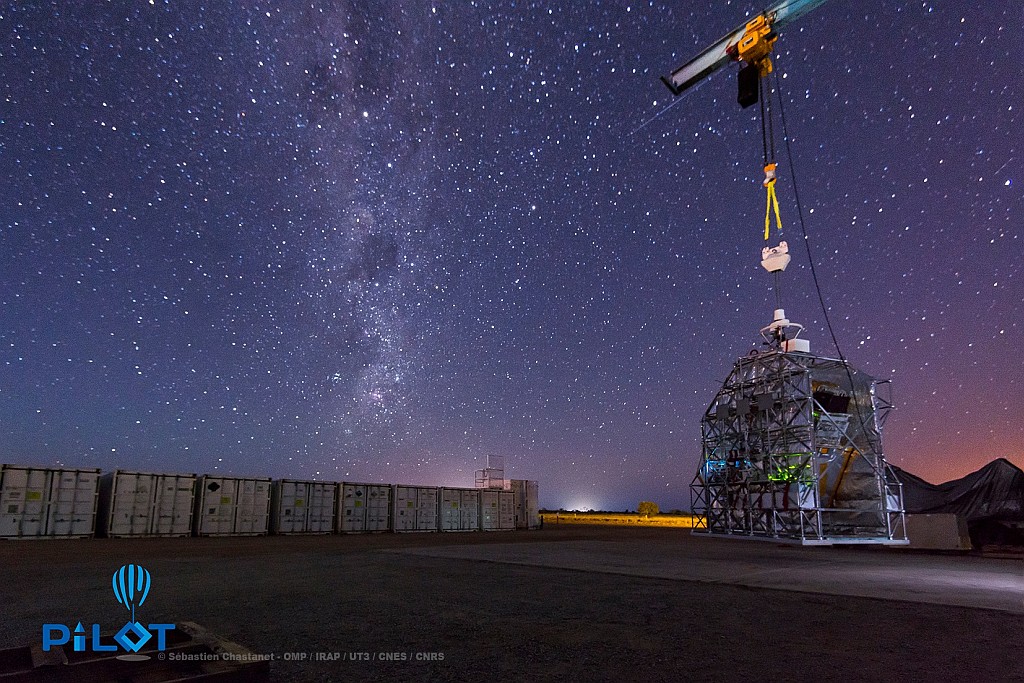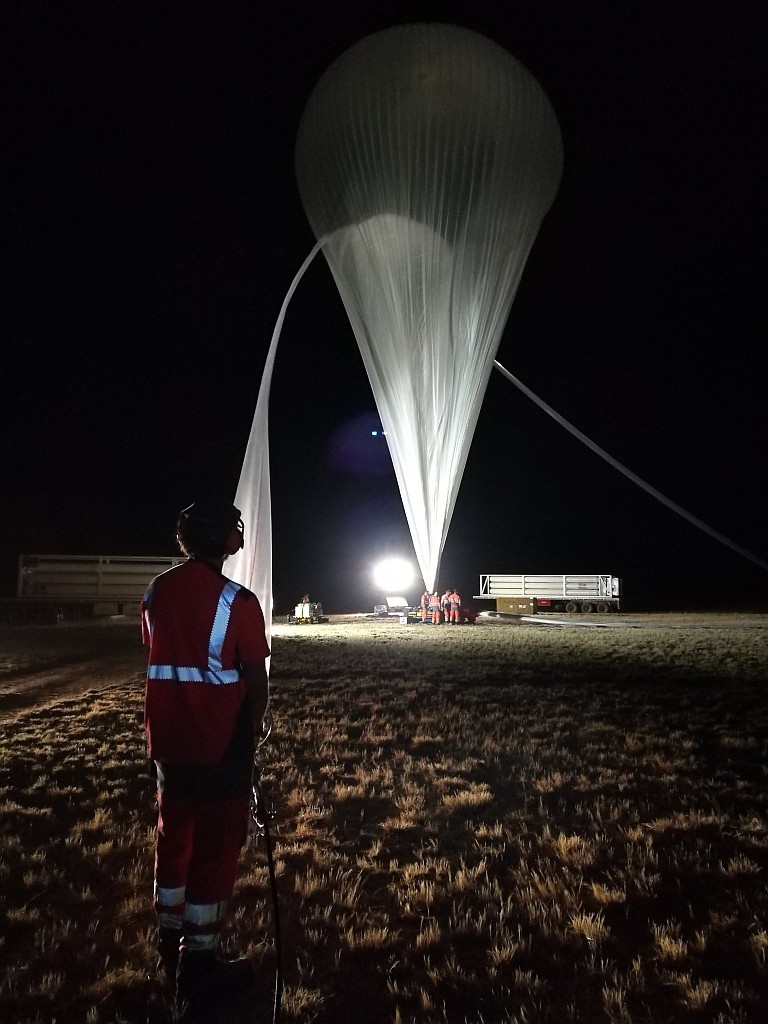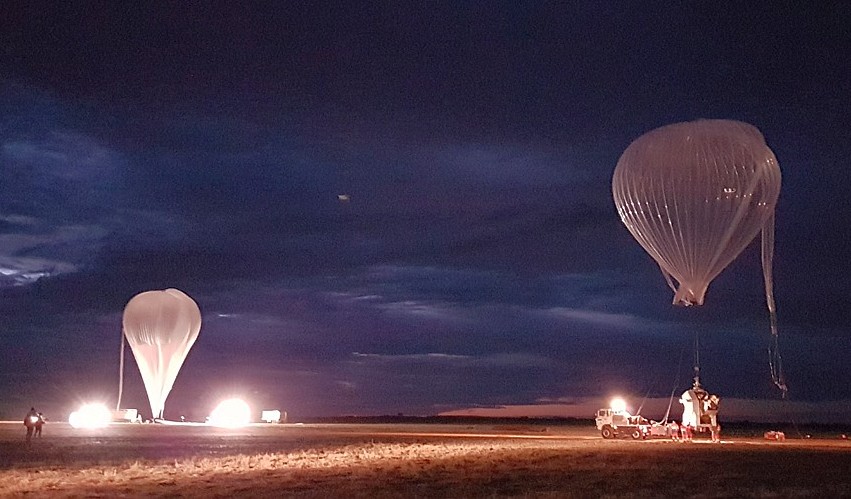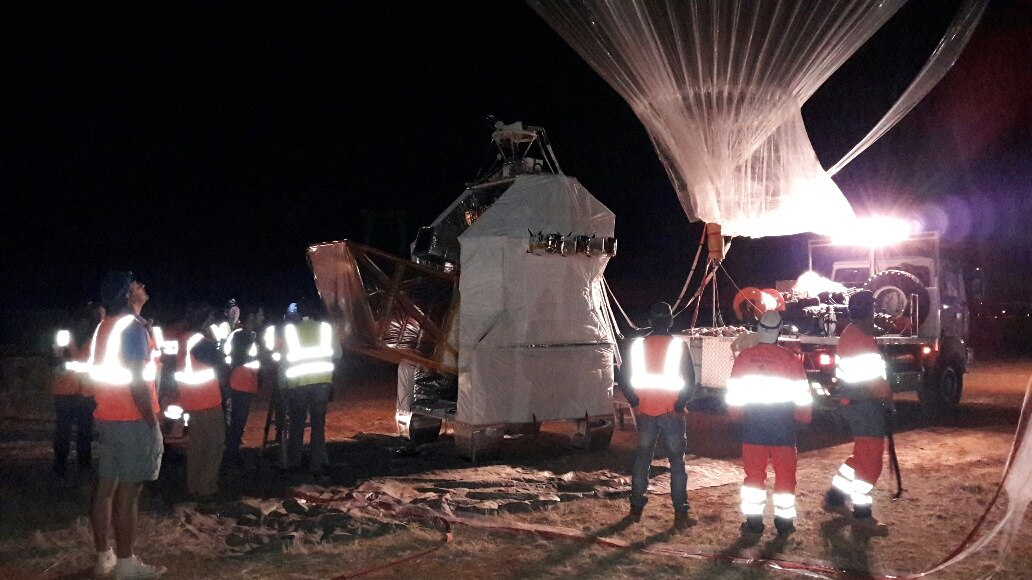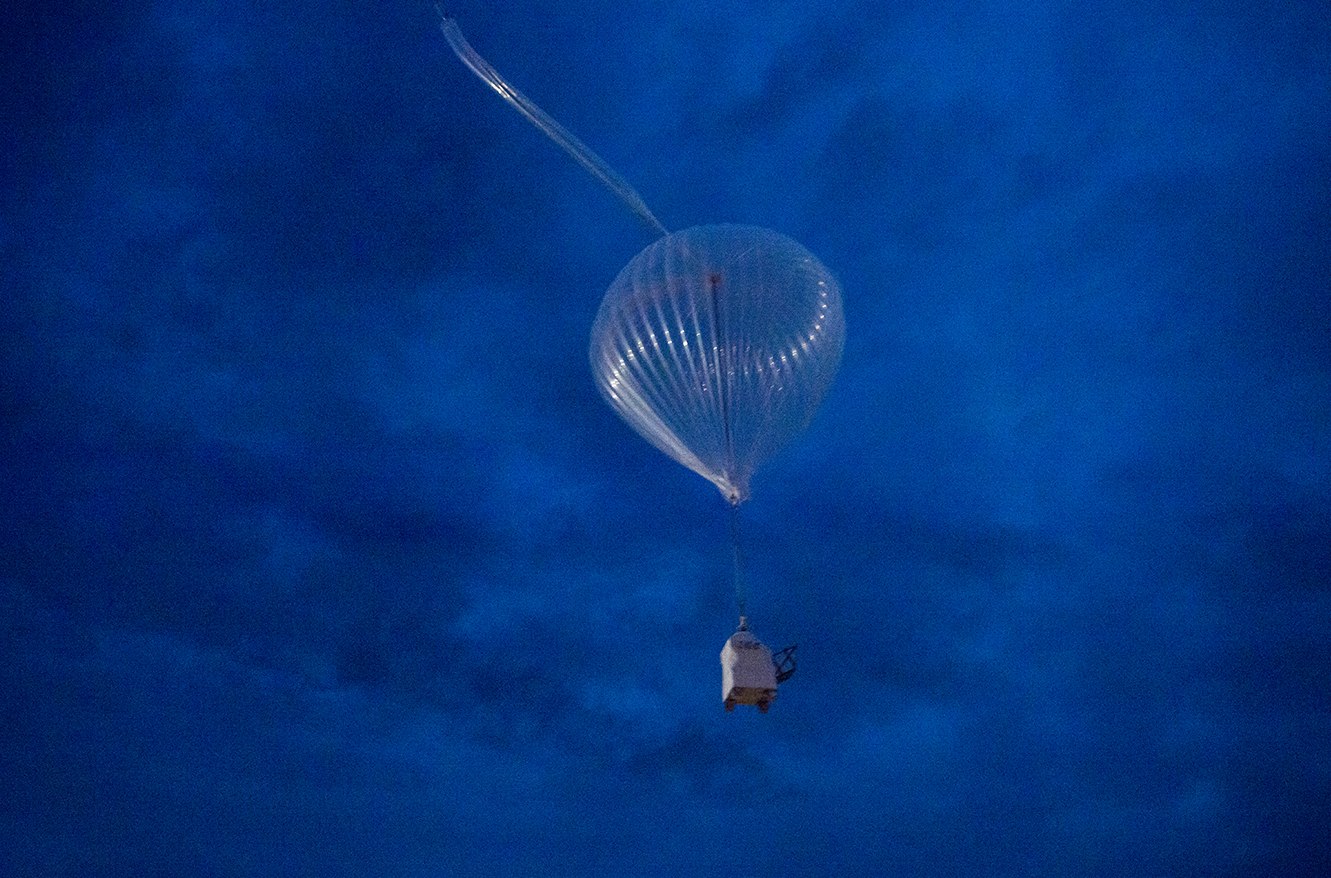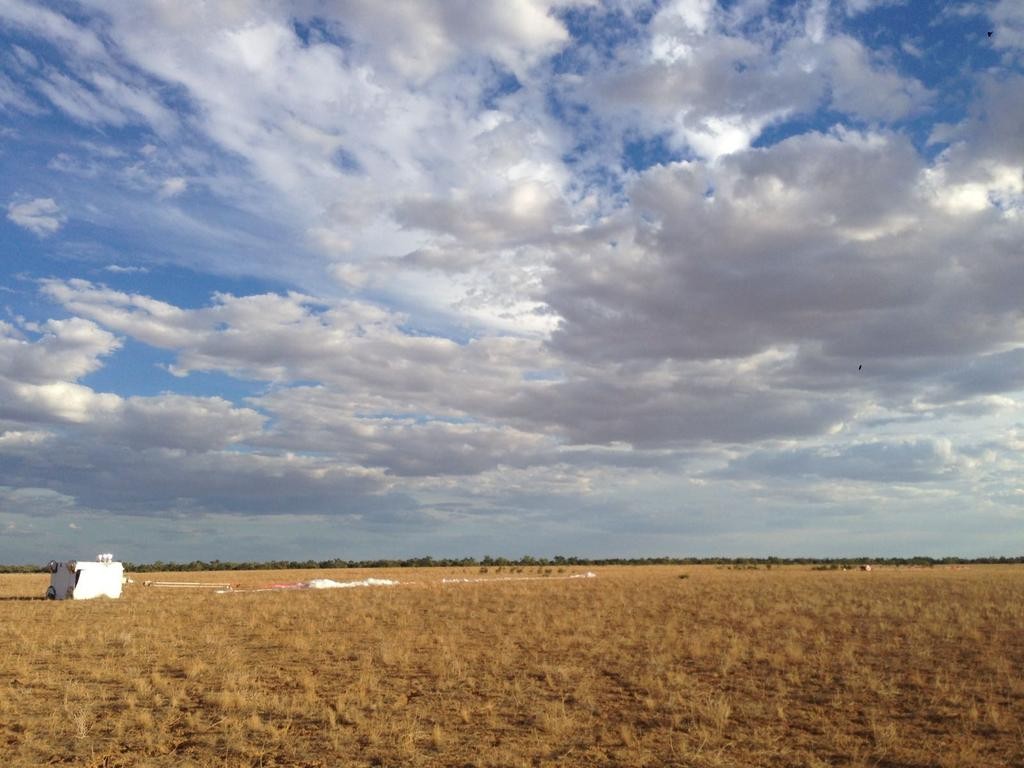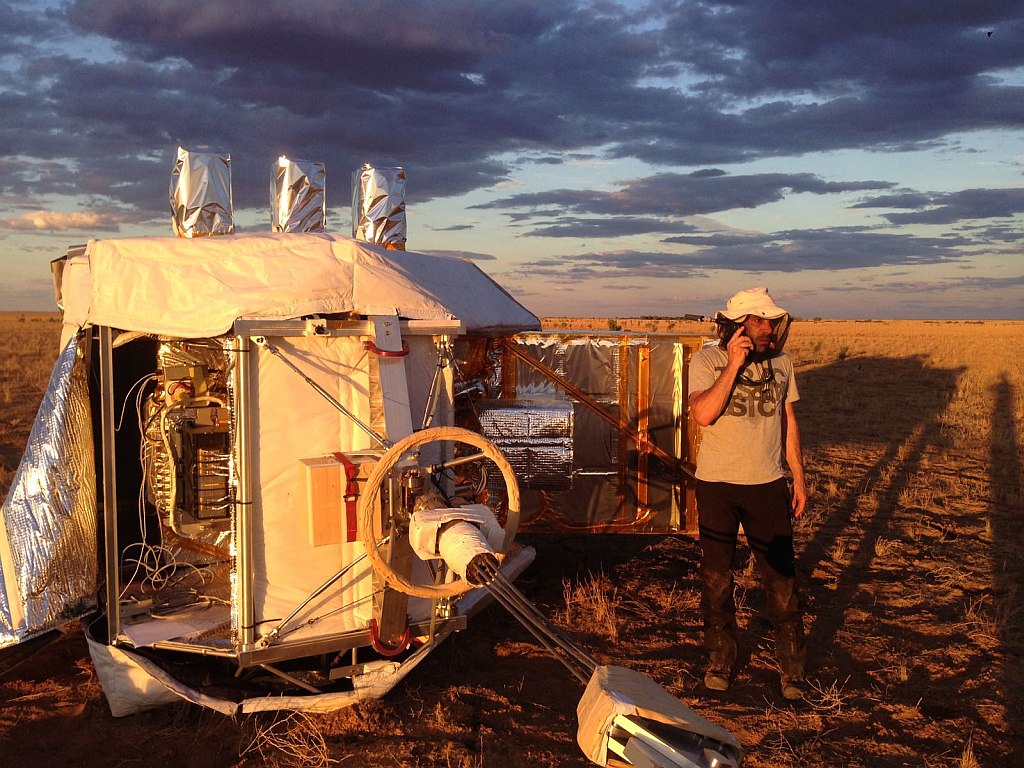-
April 19 2017
PILOT telescope mission closes CNES balloon campaign
Alice Springs, Australia.- The third and last mission of the Austral 2017 balloon launch campaign was succesfully conducted on April 16, 2017 from the facilities of the Australian Balloon Launch Station, in Alice Springs, in Central Australia.
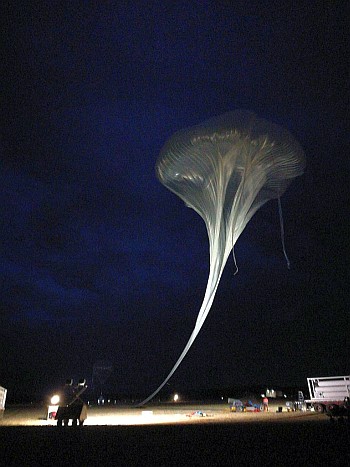
The balloon carried onboard a telescope denominated PILOT (Polarized Instrument for Long wavelength Observation of the Tenuous interstellar medium). The instrument is part of a collaboration between the Centre National d’Etudes Spatiales (CNES) -also in charge of the balloon launch- the Institut de Recherche en Astrophysique et Planetology (IRAP-CNRS) and other institutions from France and other countries.
The balloon was launched about 6:20 local time. At right we can see an image of the moment of the balloon release kindly provided by Nicolas Touzet from CNES.
After a nominal climbing, it reached an altitude of 39.5 kms which was maintained during the diurnal part of the flight, while the balloon moved west. At night, this altitude was a little bit lower -about 32 km- due to the cooling of the helium and the subsequent loss of bouyancy.
The mission was terminated around 15:20 local time on April 17, totalizing 33 hours and 40 minutes of flight, which sets a new duration record since the introduction of the new CNES control balloon systems in 2013. The absolute record for CNES still belongs to a mission of the INTERBOA campaign which logged 45 hours of flight over Kiruna, Sweden in 1998.
The landing area of the telescope was located 250 km West of Longreach, Queensland, inside the Lake Diamantina National Park. Fortunately, the spot on which the gondola came to rest was very close to a road.
Below these lines we can see a panorama of the PILOT telescope after landing, tipped over one side. The image was provided by Stephane Louvel from CNES.
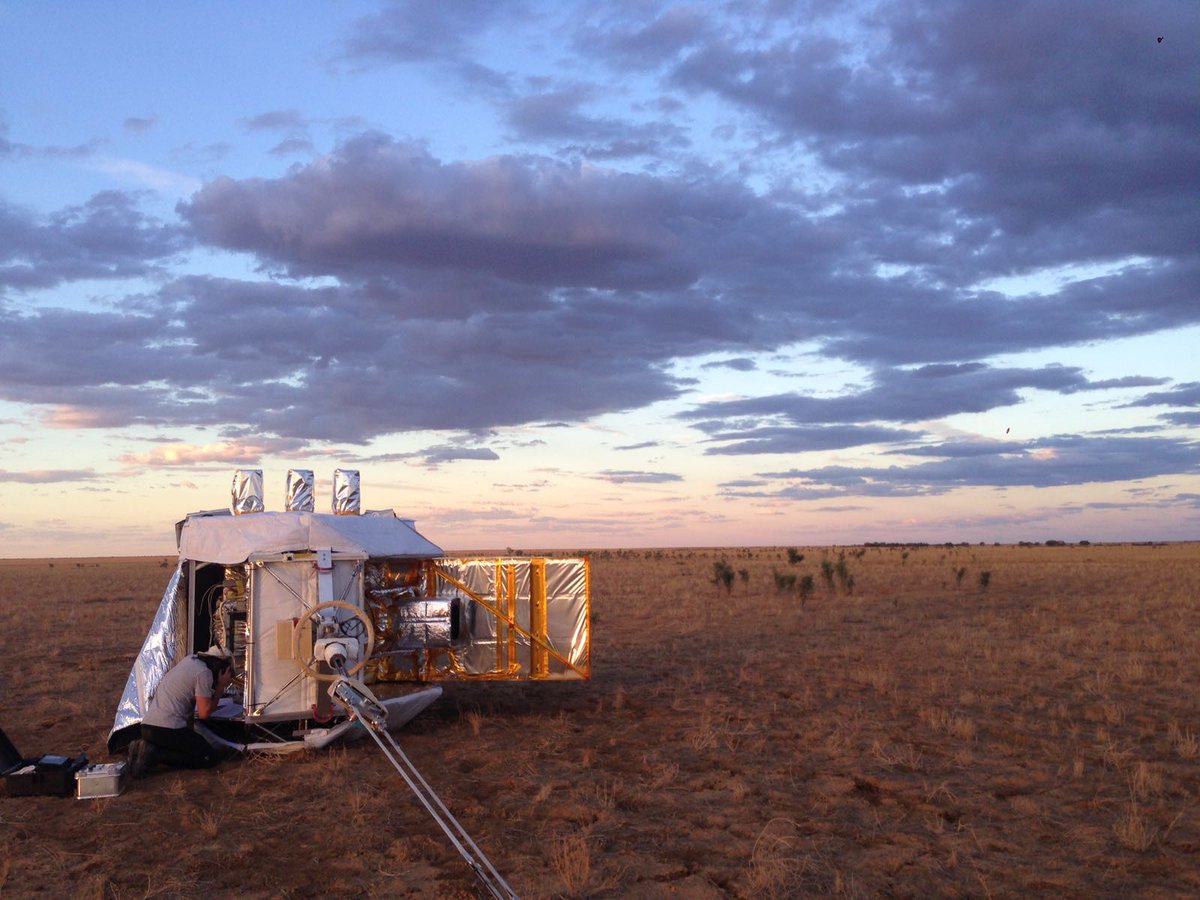
PILOT was flown using a 803Z balloon with a volume of 800.000 m3, the largest one available from Zodiac, the French firm which is the main provider for the CNES program. The length of the flight chain -the long strip connecting the balloon and the telescope- was about 300 meters long.
The core of the PILOT instrument is composed by a Gregorian telescope developed by IRAP, a photometer provided by the Institut d'Astrophysique Spatiale d'Orsay (IAS) including the cold optics which were developed at Cardiff University, (UK) the Half-Wave Plate developed by Rome University from Italy and the focal plane developed by the Commissariat à l'Energie Atomique (CEA). The focal planes, each of which consists of 2048 bolometers cooled to 300 mK, were originally developed for the PACS (Photoconductor Array Camera and Spectrometer) instrument onboard the Herschel satellite.
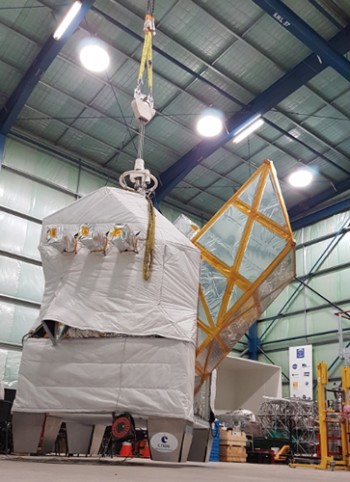
PILOT is mounted over a generic CNES stabilized gondola -a modified CARMEN model- with altazimuthal coarse pointing control. It can rotate around horizontal axes inserted inside the gondola walls to change the elevation of its submillimeter optical axis. Horizontal rotation around the flight chain axis is enabled by an azimuth swivel located on the top of the gondola. Mapping of the sky is accomplished by rotating the gondola over a large azimuth range at constant elevation, in order to reduce the residual atmospheric contribution to the measured signal.
The extremely sensitive nature of the observations made by PILOT force to know the instrument attitude with an accuracy better than a few arcsec over a few minutes and also to operate in both night and day conditions. The task is carried out by ESTADIUS a high motion "one arcsec" daytime attitude estimation system, designed for stratospheric applications, and first developed by CNES for the PILOT experiment. It is mounted on top the PILOT instrument in order to be co-aligned and to rotate simultaneously with it while PILOT is observing and mapping the sky.
The first flight of the PILOT experiment was carried out in September 2015, from the Timmins Stratospheric Balloon Base in Canada. It lasted 24 hours, allowing both a characterization of all the sky seen from the northern hemisphere in and out of the galactic plane. The objective of the second flight just performed over Australia was to obtain similar data but this time from the southern hemisphere.
PILOT goal is to precisely measure polarization and characterize magnetic properties of the interstellar dust over a combination of spatial scales and optical frequencies never used before. The measurements obtained by PILOT during the entire program (which contemplates a third flight, to be carried aout in the near future from the Arctic) will complement the set of observations obtained in past decades by other balloon-borne payloads like Pronaos or Archeops.
The AUSTRAL 2017 effort -the first performed by CNES in Australia in the last 20 years- is now complete, so a large part of the scientific teams will left the Australian base on Friday April 21, followed by the rest in the beginning of the following week.
It was a very succesful but also a very hard campaign. On this regard, in the near future, I'm planning to return to it through an interview with the head of CNES in the field, Mr. Stephane Louvel, to whom I'm very grateful by the precise, fast and complete information he provided me during the entire duration of Austral 2017.
-
Share this on social media


